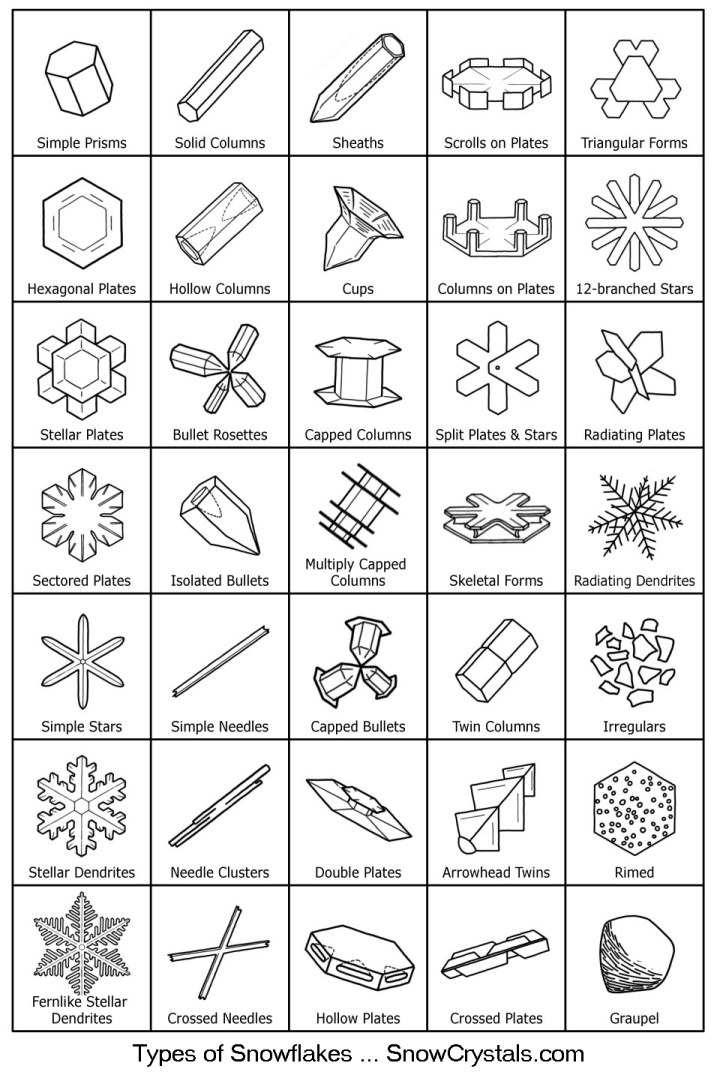
Dec 18, 2012
It usually takes about 15 to 45 minutes for a snowflake to form and fall to the ground.
That's according to Kenneth Libbrecht, who studies the physics of snowflake formation. Latif Nasser recently visited him at his lab in Southern California for a story in our new episode Bliss.
Ken has a huge collection of snowflake photos and knowledge, so we decided to put together a little Snowflake 101 here on our blog featuring some of his images (if you want even more cold, hard snowflake facts, head to Ken's site SnowCrystals.com, or check out one of his many books). OK, here we go!
If I ask you to picture a snowflake, chances are the image that pops into your head is gorgeous, complex, and beautifully symmetrical:
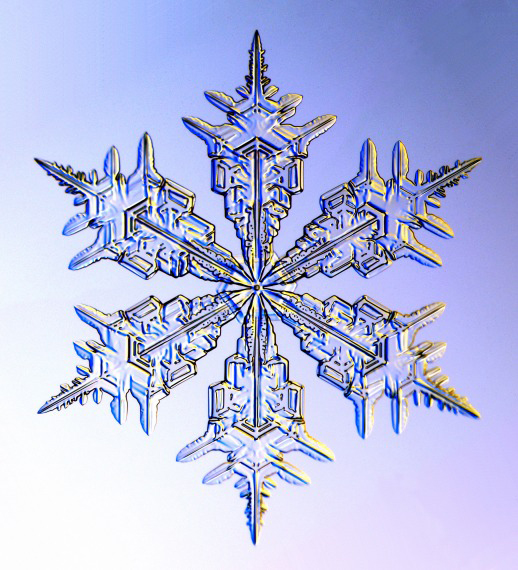
There, you see it: six shimmering, crystalline arms, on a perfectly-formed specimen. But this isn't really what snowflakes look like. Sure, some do. But they're the superstars; the bombshells that catch our eyes and wind up on holiday cards and sweaters.
More often, snowflakes look something like this:
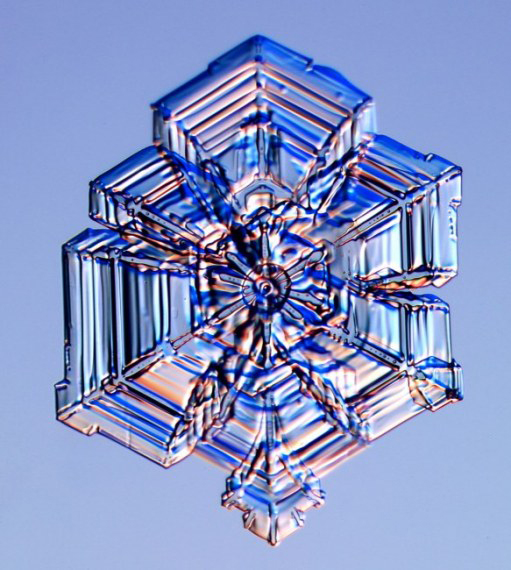
Lumpy, lopsided, and irregular:
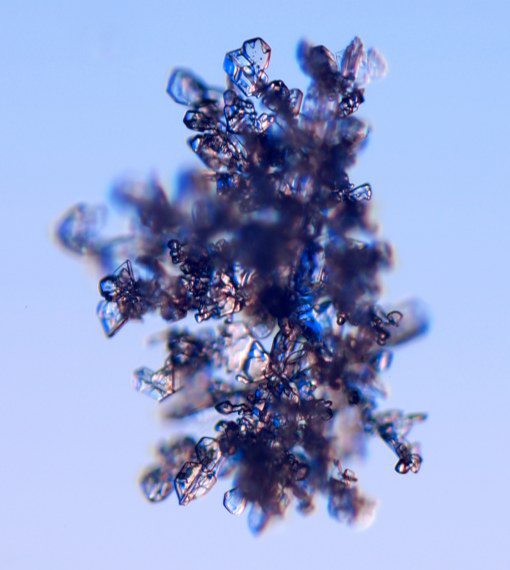
Snowflakes can take on very different shapes as they grow.
Let's start at the beginning: before a snowflake can start to form, water has to work its way up into the sky -- by evaporating from lakes, rivers, and oceans, or transpiring from plants (read: a watery vapor is given off from leaves). Breathing also does the trick.
Once water vapor's in the air, it starts to condense around dust particles as the air cools down -- forming countless teeny water droplets, each centered around one particle of dust. Gathered all together, these floating dust-droplets make up a cloud.
Then, if the air continues cooling, and gets cold enough (usually around 14ºF or -10°C, according to Ken), the water droplets can begin to freeze. And once a droplet turns into a little ice particle, the water vapor around it starts to condense on that ice particle. Cue the snowflakes!
Radiating out from their ice-particle cores, most snowflakes start out pretty unassuming: as six-sided pieces of ice, with two faces (a front and back plate); it's your regular, run-of-the-mill hexagon! The hexagonal shape has to do with the way hydrogen and oxygen are bonded with each other within the ice molecule. (In fact, if you look at the first perfect snowflake image in this post, you can just make out the faintest outline of a hexagon at its center.) As the snowflake grows, though, it gets more complex... and things actually get pretty complicated after this (and involve wrapping your head around "crystal faceting" and molecular forces). But! The main takeaway is that it leads to snowflakes of many different shapes and sizes, some of which are pretty surprising if you've never studied snow crystals before (though you'll notice, most have a hexagonal-base... and even those with triangular shapes spring from the same six-sided molecular shape):
Maybe one of the weirdest types of snow crystal is the capped column -- two plates attached by a bar, like a cufflink:
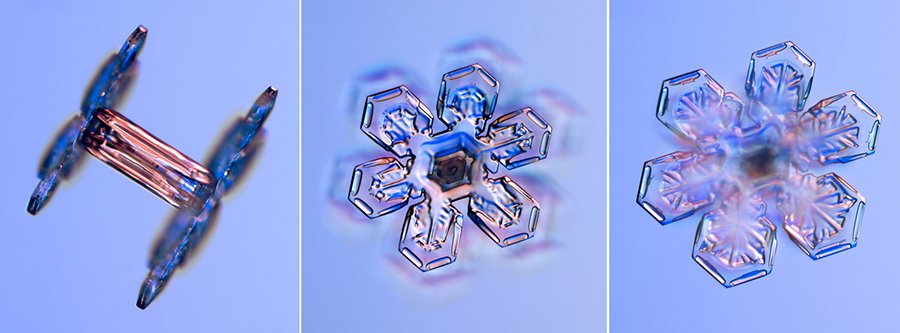
Ken Libbrecht has taken a lot of photographs of snowflakes out in the wild. A LOT.

And he says he often glances over thousands of crystals before choosing one spectacularly symmetrical enough to photograph -- like this one, a stellar dendrite:
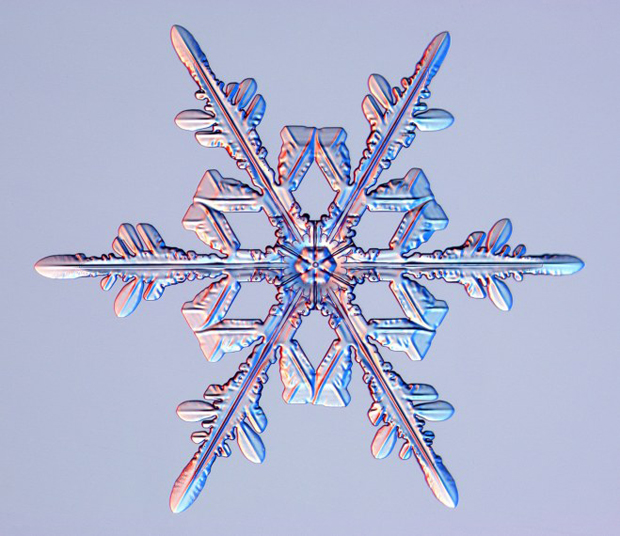
Because of their crystal-clear, well-balanced beauty, stellar dendrites are the most famous flakes, the real crowd favorite.
But if you look closely, even these supermodels aren't flawless: look at the little arms on the branches. They don't exactly match up; they're not perfectly symmetrical. That's partly because snowflakes are always changing… either growing, or evaporating… and partly because there's a lot of complicated physics going on in those little crystals.
Ken is working to figure out the particulars in his lab in Southern California...

...mapping the ideal conditions for forming different types of snowflakes.
He also grows snowflakes in his lab...
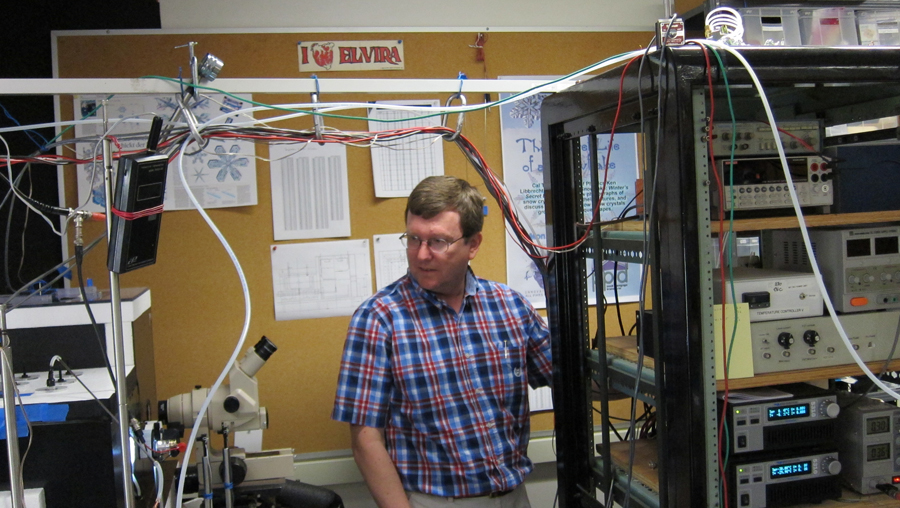
…where he mostly looks at small, simple snowflakes -- snowflakes that are much thinner than a sheet of paper -- because, otherwise, the physics get too complicated.
But it's not all math in the lab. He also makes movies of gorgeous crystals taking shape inside his machines:
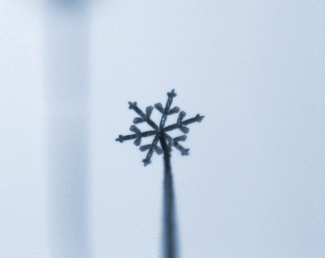
Thanks to Latif Nasser for his notes, reporting, and photographs of Ken, his work, and his lab. And thanks to Ken Libbrecht for letting us feature his photos here. Find more on Ken's website.
